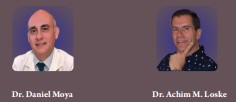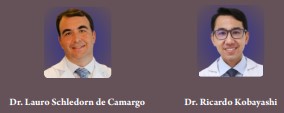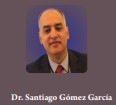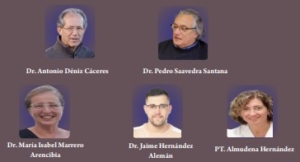Invitation to the Presentation and Analysis of Prospective Data from a Multicenter Retrospective Study
Editorial | Vol 2 | Issue 2 | Jul – Dec 2022 | page: 01-02 | Di Giorno Alfonso
DOI: 10.13107/jrs.2022.v02.i02.049
Author: Di Giorno Alfonso [1]
[1] Scientific Director of Di Giorno Rehabilitation Medical Centers, Focused Shockwave Specialist.
Address of Correspondence
Dr. Di Giorno Alfonso, MD
Scientific Director of Di Giorno Rehabilitation Medical Centers, Focused Shockwave Specialist
E-mail: a.digiorno@ckf-digiorno.com
Editorial:
“FST Focused Shockwave Therapy” is a congress created to communicate the results of one of the largest Italian studies on focused shockwave therapy, carried out with the aim of evaluating the effectiveness of the aforementioned therapy in non-unions and myotendinous pathologies affecting shoulder, elbow, and hip regions.
Studies were made available by the Di Giorno Medical Rehabilitation and Sports Medicine Centers, an Italian national benchmark for focused shock wave therapy with over 35 years of experience, and 50,000 cases treated. This project was possible with the collaboration of the Orthopedic Specialty Schools of Unimore, UniRoma1 Sapienza, UniRoma2 Tor Vergata, and the Magna Graecia University of Calabria.
The Congress will open with greetings from the from the Honorary President of the Congress Prof. Giorgio De Santis, Honorary Citizen of Cosenza and Full Professor of Plastic Surgery and Dean of the Faculty of Medicine and Surgery of UniMoRe and from the President Giorgo Gasparini, Full Professor of Orthopedics, and Traumatology and Director of the School of Specialization in Orthopedics and Traumatology of the University of Magna Graecia in Catanzaro.
The President of the Italian Society of Shock Wave Therapy (SITOD), Dr. Sergio Gigliotti, will present a report.
This will be followed by a lectio magistralis by Prof. Daniel Moya welcome guest as President of the Ibero-American Federation of Shockwaves and Tissue Engineering (Onlat) and former President of the International Society for Medical Shockwave Treatment. Dr. Moya is an orthopedic surgeon specialized in shoulder surgery with decades of experience in the field of regenerative medicine and several publications on the subject.
He will analyze the development of shock waves in Latin-American.
The event will take place in two stages. A morning session of pure scientific discussion carried out by masters of Italian orthopedics, radiology, and rehabilitation medicine, and an afternoon session focused on the study object of the Congress.
The first session will include the discussion of the main shoulder, hip, and elbow tendino-myopathies and non-unions conditions with a focus on certain fundamental aspects for understanding the use of focused shock wave therapy in their treatment.
Prof. Fabio Catani Director of the Unimore Orthopedic Clinic, world expert in hip and knee robotic surgery and Prof Giuseppe Porcellini, Director of the Unimore School of Specialties of Orthopedics and Traumatology and a prominent international figure in shoulder surgery, will take care of enunciating the classifications of the pathologies covered by the Congress.
Afterward, Prof. Gumina, Full Professor in Orthopedics and Traumatology at the Sapienza University of Rome and Director of the Complex Operative Unit in Orthopedics and Traumatology in the “Sapienza” University Department of the Polo Pontino, will deal with the biological aspects and risks.
Prof. Tarantino, Full Professor of Diseases of the Locomotor System at the University of Rome “Tor Vergata,” will address the various topics from a clinical point of view, offering ideas, and applying his experience in the search for signs and suggestive symptoms that can allow to suspect and/or make a differential diagnosis between each of these conditions.
Prof Cacchio, Associate Professor of Physical Medicine and Rehabilitation at the University of L’Aquila with proven experience in the treatment of musculotendinous pathologies with shock waves, will focus on the biomechanics and pathobiomechanics underlying the myotendinous pathologies of interest.
Prof. Elizaveta Kon, Associate Professor at Humanitas University and Humanitas Research Hospital in Milan, scientific and organizational manager for various European and national research projects, will speak about orthobiology and the role of shock waves in this regard.
The radiological aspect, crucial in characterizing and monitoring these pathologies over time, will be discussed by Prof. Monetti, radiologist with extensive experience in the sports medicine and traumatological fields, and author of over 800 publications both nationally and internationally concerning the musculoskeletal system. Professor Monetti will also clarify some aspects regarding radiological monitoring during focused shock wave application.
After the clinical-diagnostic part, the focus of the congress will move toward conservative regenerative therapy, represented by the use of focused shock waves and the topic will be presented by Dr. Maria Cristina D’Agostino former President of SIDOT. During this part of the session, there will be an opportunity to discuss and learn about the ways, in which shock waves allow the regeneration of damaged tissues and the time required to achieve it.
A discussion will then follow on the surgical approaches to the aforementioned pathologies, presented to the public by nationally and internationally renowned experts, with the moderation of Prof. Catani, an expert in biomechanics and physiology of major joints, joint prosthetics, computer-assisted surgery, and robotics in knee and hip joint prosthetics and experience in the orthopedic-regenerative field; together with their experience regarding shock wave therapy. Prof. Cattani will discuss about how orthopedic surgery is currently leaning toward the regenerative rather than the reconstructive area.
The Directors of Orthopedic Clinics and Schools of Specialization in Orthopedics and Traumatology Fabio Catani, Giorgio Gasparini, Umberto Tarantino, Giuseppe Porcellini and Stefano Gumina, with their clinical experience, will also clarify the importance of carrying out appropriate rehabilitative exercises for functional recovery, the correct execution timing and the correct way to perform this regenerative treatment to obtain the maximum benefit for the patient.
During the break, the guests will be entertained with a standing lunch offered by the Congress organization to encourage knowledge and allow dialogue between the various participants.
A workshop on focused shock waves which will have the aim of showing the use of the method according to the Italian school, describing its functioning and correct execution, highlighting the mistakes not to be made to achieve a satisfactory result, and will take place for the whole day in the Medical Center.
The afternoon will focus on the presentation of 300 clinical cases treated with shock waves with stable positive results even 12 months after the start of treatment. The discussion of these cases will be moderated by leading figures of national orthopedics and will have the aim of involving all those present in a constructive way.
The program will be completed by the experience brought by the Spanish-Latin American School, headed by Prof. Daniel Moya, which will be interesting for comparison and growth for those who use the method and for those who want to start using it in the treatment of musculoskeletal pathologies.
Dr. Raffaele Scalpone, diabetologist and President of Dela Aid, will expose about the usefulness of the method in orthopedic pathologies of the diabetic and diabesity.
Finally, the entry of four other pathological conditions will be announced within a new multicenter study with prospective collection of retrospective data in the Medical Rehabilitation and Daytime Sports Medicine Centers located in Bologna, Rome, Cosenza, Lamezia Terme, organized by the four Orthopedics Specialty Schools of UniMoRe UMG Sapienza and Tor Vergata.
The Curia of Cosenza with its auditorium, the museum, the historic cathedral with the Madonna del Pilerio patroness of Cosenza will host us on this day of discussion, on this method, between the schools overlooking the two shores of the ocean. Participants will also have the opportunity to visit the historic center of Cosenza, the 750 km between the Tyrrhenian and the Ionian with the suggestive seaside villages, the beaches, the cliffs and the seabed and the typical products such as the cedars, the citrus plantations, the citrus plantations, the Olive groves and bergamot and then the Sila, the greenhouses, and still the most beautiful kilometer in Italy, the Reggio Calabria seafront, as D’Annunzio defined it, to then go to Aspromonte passing through the Costa Viola, not forgetting Isola Capo Rizzuto, Sibari with its plain and the Albanian countries and the Pollino with its national park, the second park of Europe.
Calabria 1000 before Christ was inhabited by the Italians, now it represents well a miniature Italy, Italy has everything, history, traditions, culture, seas, mountains, plains and many other things.
Dr. Di Giorno Alfonso
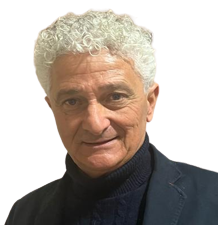
| How to Cite this article: Invitation to the Presentation and Analysis of Prospective Data from a Multicenter Retrospective Study. | Journal of Regenerative Science | Jul – Dec 2022; 2(2):01-02. |
(Abstract Full Text HTML) (Download PDF)

